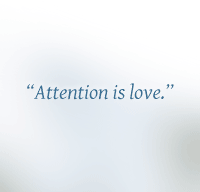 Whenever Roso saw a monk coming, he immediately sat facing the wall. Hearing of this, Nansen said, “I usually tell my people to realize what has existed before the kalpa of emptiness, or to understand what has been before Buddhas appeared in the world. Still, I haven’t acknowledged one disciple or even a half. If he continues that way, he will go on endlessly.” – Case 23, Shoyoroku
Whenever Roso saw a monk coming, he immediately sat facing the wall. Hearing of this, Nansen said, “I usually tell my people to realize what has existed before the kalpa of emptiness, or to understand what has been before Buddhas appeared in the world. Still, I haven’t acknowledged one disciple or even a half. If he continues that way, he will go on endlessly.” – Case 23, Shoyoroku
I hate it when people talk about koans. I’m going to Wisconsin next weekend. This gives me a chance to talk about koans.
First, Wisconsin:
Extraordinary Ordinary: How to Fall in Love with the Life You Already Have
Sat., August 21, 2-4 p.m.
YogAsylum, Brookfield WI
Register by clicking here or arrive at the door
A wisdom teaching and book signing
Just this morning at the yoga class I teach in my dinky little hometown 2,042 miles from Wisconsin, someone told me his sister was coming to see me next Saturday in Brookfield. Then I heard from the venue manager, and the kitchen table tour host, one after the other, with last-minute details and well-wishes. All of that and I immediately sat up straighter and faced the trip before me with enthusiasm: “I love Wisconsin!”
Come see me so I can tell you in person.
Now, koans.
What is a koan? Nothing like what you’ve probably heard tell. Take this for instance, a perfectly reasonable and popular definition of koan as “a paradoxical anecdote or a riddle that has no solution.” It’s perfectly reasonable to define koan that way and it is completely wrong. Every koan has a solution; otherwise we wouldn’t train with koans as we do in my Zen lineage. We train with a collection of 750 koans including the one above. By train, I mean that when a teacher directs you to a koan, you meditate with it and then present the depth of your realization of the koan to your teacher in a private meeting. Most of the time, the depth of your realization isn’t deep at all: you just grasp at the meaning off the top of your head. You try to tease out some kind of explanation. At those times, the teacher tells you kindly and straightforwardly to keep working on it, and you are relieved of at least one of your erroneous concepts.
The way you work on your koan is not by working on it. Not by analyzing and postulating, figuring and deducing. You work on it as a process of digestion. Instead of putting your koan into your head and fooling around with it, you put it in your mouth and swallow it. You put it in your belly and digest it. You absorb it into your system and forget about it.
A koan is nothing like a riddle you untangle in your brain, and everything like a piece of cheese, as long as it is a piece of cheese you do not wear on your head.
You won’t hear me talk much more about koans. After I eat a piece of cheese, I for one, do not spit it back up and wear it on my head. I would suggest you tread lightly around people who talk about koans the same way you would avoid people who regurgitate cheese and adorn themselves with it. (Except maybe in Wisconsin.)
And hey! If you are in Brookfield on Saturday, I will offer a personally inscribed book to everyone who comes up to me, sticks out a hand and answers this koan.



Every moment one tries to remember or analyze something, one forgets how to taste and experience it. To be aware is to know what beauty truly is.
Comment by Liara Covert — August 16, 2010 @ 10:20 am
i love this.
Comment by cath c — August 16, 2010 @ 2:34 pm
i love the humor here. light! and not less true.
Comment by kate — August 16, 2010 @ 2:57 pm
Thanks for making koans a little less intimidating.
Comment by Janet M — August 17, 2010 @ 4:41 pm
I love Wisconsin, don’tcha know. 🙂
Comment by Swirly — August 17, 2010 @ 10:25 pm